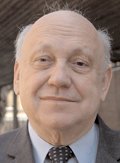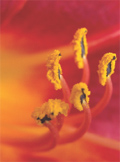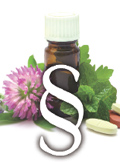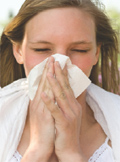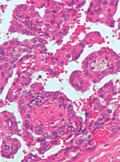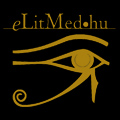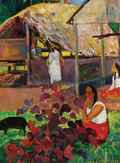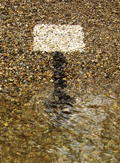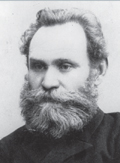The eLitMed.hu medical portal uses computer cookies for convenient operation. Detailed information can be found in the Cookie-policy.
Lege Artis Medicinae - 2013;23(07-08)
Content
[Treatment of allergic rhinitis from clinical guidelines to rutin practice]
[Clinical practice guidelines aim to improvethe quality of patient care by providing spe-cific recommendations for daily practice.Many factors may influence the implemen-tation of a guideline in practice. An ade-quate analysis of the barriers to guidelineadherence can help to improve it’s imple-mentation.]
[“War of numbers” and the facts about pegylated interferon based treatment of chronic hepatitis C]
[Further to the traditional pegylated interferon and ribavirin products, used since 2001 in the treatment of chronic hepatitis C, two new direct antiviral protease inhibitors were licensed in 2011: telaprevir and boceprevir. Added to the traditional dual combination either of these drugs increase significantly the rate of sustained viral response. Discussions over the relative efficacy of two different bands of interferons with different pharmacokinetic properties as well as of the different protease inhibitors are arising regularly. After critical review of the relevant literature the authors did not identify any clinically meaningful differences in efficacy of the two pegylated interferons (α 2a or α 2b) neither in dual nor in triple combination therapies. There has been no convincing evidence found to support superiority of one protease inhibitor over the other, either: Generally both drugs can be recommended for patients previously or actually not responding to dual therapy. However, there is a tendency towards a potential difference between the relapse rates after treatments with the two pegylated interferons in dual therapy, attributable potentially to the difference of their pharmacokinetic profiles. In special cases the choice of protease inhibitors can be influenced by cost-effectiveness and side effect profile.]
[Legal status and regulation of complementary and alternative medicine in Europe]
[OBJECTIVE - This study aims to review the current legal status of complementary and alternative medicine (CAM) in the 27 member states and 12 associated states of the European Union (EU). METHODS - We contacted national Ministries of Health and educational institutions of all participating countries, international, local and regional CAM associations and members of the EU project CAMbrella. Literature search was performed in governmental, scientific and popular science websites as well as the web sites/databases of health ministries and EU and Hungarian law documents. RESULTS - All 39 nations have different legislative frameworks and different regulations of CAM. CAM activities are regulated by health legislation in 17 member states, 11 of which have created a specific CAM law, and 6 of which include sections related to CAM in their general health laws. Some countries only regulate several CAM treatments. Preparations, agents and herbal products used in CAM are subject to similar authorization requirements in all countries, comparably to other medicinal products. One exception is the requirement for documentation of efficacy studies. The Directives, Regulations and Resolutions of the EU will affect the conditions that might influence CAM treatment(s) in Europe. CONCLUSION - We experienced an extraordinary diversity in EU countries with regard to the regulation and practice of CAM, but did not find differences in the regulation of herbal products and medicines used in CAM. This motivates patients, practitioners as well as researchers when crossing the borders of European countries. In the current legislative environment we think that harmonisation of law is possible within the EU: individual states within culturally similar regions should harmonise their CAM legislation and regulation. This would probably safeguard against inadequately justified, over- or underregulated practice at national levels. In Hungary, modifications of the decree regulating on CAM are currently being prepared following professional recommendations. This outdated decree needs to be reconsidered, as 17 years of practice have shown which practices are worthy to be maintainted, taught and applied within the healthcare system and which should be omitted.]
[Medical anthropology - medical students fieldwork experiences]
[The experience gained in teaching medical anthropology at Semmelweis University of Medicine is reported in the study. Very often medical anthropology is identified by the physical anthropology of “Dr. Bone”, although this discipline is a branch within cultural anthropology which deals with applied anthropology. During practices, students following their preclinical studies - that is already not lay but still not doing healing work - had to carry out fieldwork and participate as observants at a medical facility of their choice: inpatient, primary care clinic or alternative medical center/ clinic. The purpose of the field work was the examination and the analysis of the different healing systems, and of the doctorpatient relationship. During the nine years, more hundreds of fieldworks were made. In the study, we attempted to sum up these experiences for a better understanding of pluralism of the Hungarian medical system, the usability and eventual faults of different healing systems, and ultimately the effectiveness of the medical anthropology course.]
1.
Clinical Neuroscience
[Headache registry in Szeged: Experiences regarding to migraine patients]2.
Clinical Neuroscience
[The new target population of stroke awareness campaign: Kindergarten students ]3.
Clinical Neuroscience
Is there any difference in mortality rates of atrial fibrillation detected before or after ischemic stroke?4.
Clinical Neuroscience
Factors influencing the level of stigma in Parkinson’s disease in western Turkey5.
Clinical Neuroscience
[The effects of demographic and clinical factors on the severity of poststroke aphasia]1.
2.
Clinical Oncology
[Pancreatic cancer: ESMO Clinical Practice Guideline for diagnosis, treatment and follow-up]3.
Clinical Oncology
[Pharmacovigilance landscape – Lessons from the past and opportunities for future]4.
5.
